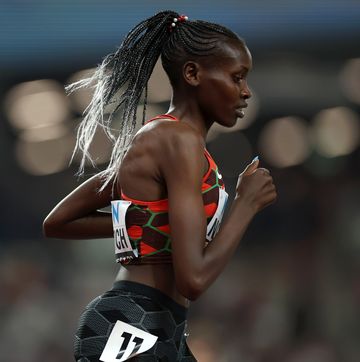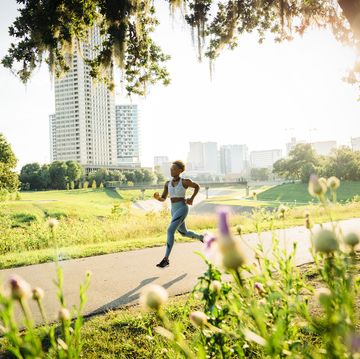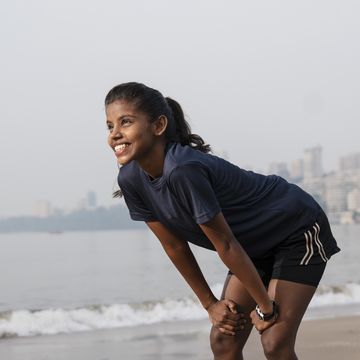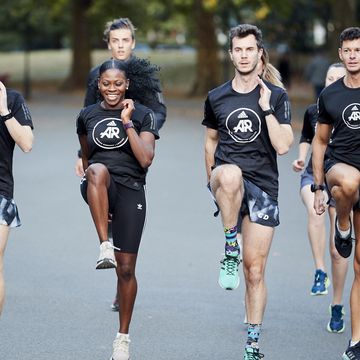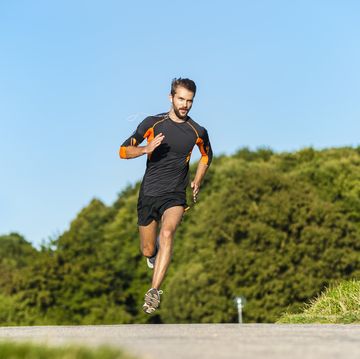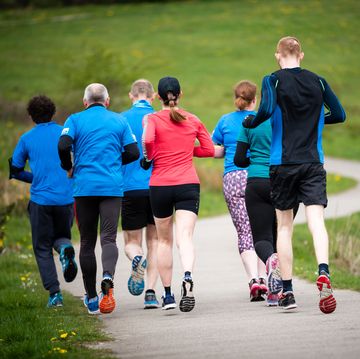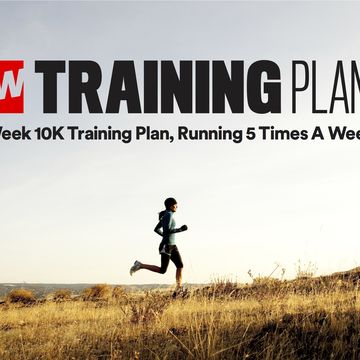Richard Ringer shocked the running world this summer with a final 200m finishing kick that had to be seen to be believed when he overtook Maru Teferi metres before the line to take gold in the European Championships.
And he's not the only one – Mo Farah had one of the most famous finishing kicks the world has seen. The key to his success was his race strategy, in particular his focus on the finish: he knew his kick was his greatest strength, so he relied on that instead of trying to break away early. His approach involved a long drawn-out acceleration over the final 500-800m of a race, giving him time to sap the speed of others who might have been quicker over the final 100m. His surges over the final lap were a powerful display of why distance runners need finishing speed.
Many runners believe you’re born a kicker or not, but that's not necessarily the case. ‘People think they’re limited by genetics, but that stuff can be manipulated to a degree,’ says coach Steve Magness. ‘You might never be a sprinter, but you can shift fibre types.’
Sean Coster, an exercise physiologist and running coach, says speed is different from finishing power. True top speed can only be sustained for 60-80m by most runners, he says. So a more viable asset is the ability to close hard on tired legs. This takes a unique kind of development. Distance runners need to improve their base speed enough to make the pace of longer races feel somewhat easier, but then be able to dip into that speed reserve when it’s time to power home.
Kick-starting your kick
Developing that second reserve means training your body to recruit as many muscle fibres as possible, and learning to use them when you are tired.
Building more muscle recruitment, and thus pure speed, starts with power-based workouts and explosive moves such as all-out sprints of 20-100m, hill blasts (short, steep hills approximately 25m long) and plyometrics. This kind of work is taxing – it needs to be done in a refreshed state at the beginning of the workout and with full recoveries between each repeat. This isn’t aerobic conditioning; you shouldn’t be breathing hard before starting another sprint. Aim for one day a week dedicated solely to your speed development.
A plyometric routine can be done two or three times a week, after one of your hard workouts, but not on recovery days. You want to keep everything hard on one day so you can have true recovery days.
Lance Walker, global director of performance with Michael Johnson Performance, recommends single-leg hops and the split-squat jump. He’s also a fan of what he calls ‘reactive-response plyometrics’, aimed at reducing the foot’s contact time with the ground; examples are dynamic A-skips and pogo jumps (demonstrated below).
After speed is developed through these methods it’s time to move on to workouts that mix speed with fatigue-inducing elements. Try these workouts:
500s and Bounding:
Do 4-6 × 500m repeats, with the first 200m at 5km pace or faster, straight to 100m of bounding – exaggerated long strides, driving off the back leg and lifting the front knee as high as you can – then a 200m kick finish. ‘The bounding increases force requirement and thus muscle-fibre recruitment, and then you’ve got to use that during the final kick,’ says Magness.
800 Accelerators:
Run 4-6 × 800m with 3:00 rest. For each rep, run the first 400m at 10km pace, the next 300m at 5km pace and the last 100m at mile pace.
Going up a gear
Coster’s workouts focus on developing a gear faster than race pace. Athletes perform race pace workouts for distances one or two events shorter than their goal race (eg marathoners aim for 10km race pace during 800m-to-one-mile repeats). Similarly, spending a training season aimed at a race a step faster than your usual goal will improve your kick. Coster’s 5000m runners focus on 1500m training for a period of time, either a full season or as a tune-up race before their 5000m event.
An advanced option is to combine sstrength and plyometrics with running in a circuit-style workout – for example, run 100m of strides between sets of squats and lunges. ‘Doing the strength exercises forces muscle recruitment and then you learn to use it when running,’ says Magness.
Athletes wanting to run faster toward the end of a race often try to force a kick. This causes them to tense up, change their gait and slow themselves down. In order to run faster, try to relax.
‘Shake it out,’ says Magness. ‘One of the best things you can do is to just drop the arms, open up the hands and shake them out for a second.’ The neck, shoulders and jaw are areas liable to harbour tension; take a deep, yawning breath with your mouth wide open and make sure your neck isn’t craning forward. Keep your breathing controlled, don’t let yourself overstride and aim for faster turnover.
Instead of obsessing over times and splits, move your focus to sustaining the effort, remaining calm and controlled, and envisioning your legs pushing off the ground and exploding with each stride. Staying relaxed when fatigued is a skill that, just like any other, needs to be practised. Many runners find that after putting all the ingredients together, the finishing kick comes naturally when the time comes to use it.
Fast-finish moves and drills
Do these twice weekly on a workout day to help boost your finishing kick. Start with one set and build to two.
1. Single-leg hops
Balance on your right leg and jump for distance while raising your left calf as close to your hamstring as possible. One set of 10 hops for each leg.
2. Split-squat jump
Standing with feet together, jump up and bring your right leg forward and left leg back, landing with feet split front and back. Squat, then leap up and switch leg positions in midair. Repeat 10 times, alternating lead legs.
3. A-skip
Drive your right leg up so the thigh is parallel with the ground, while bouncing on your left foot twice (clear the ground by only a few inches). Drop the right leg and drive the left leg up, bouncing twice on the right foot. Repeat for 30m.
4. Pogo jump
With legs together and knees bent a little, leap as high as you can. Bend your knees to 90 degrees as you land, then spring back up. Repeat 10 times.






